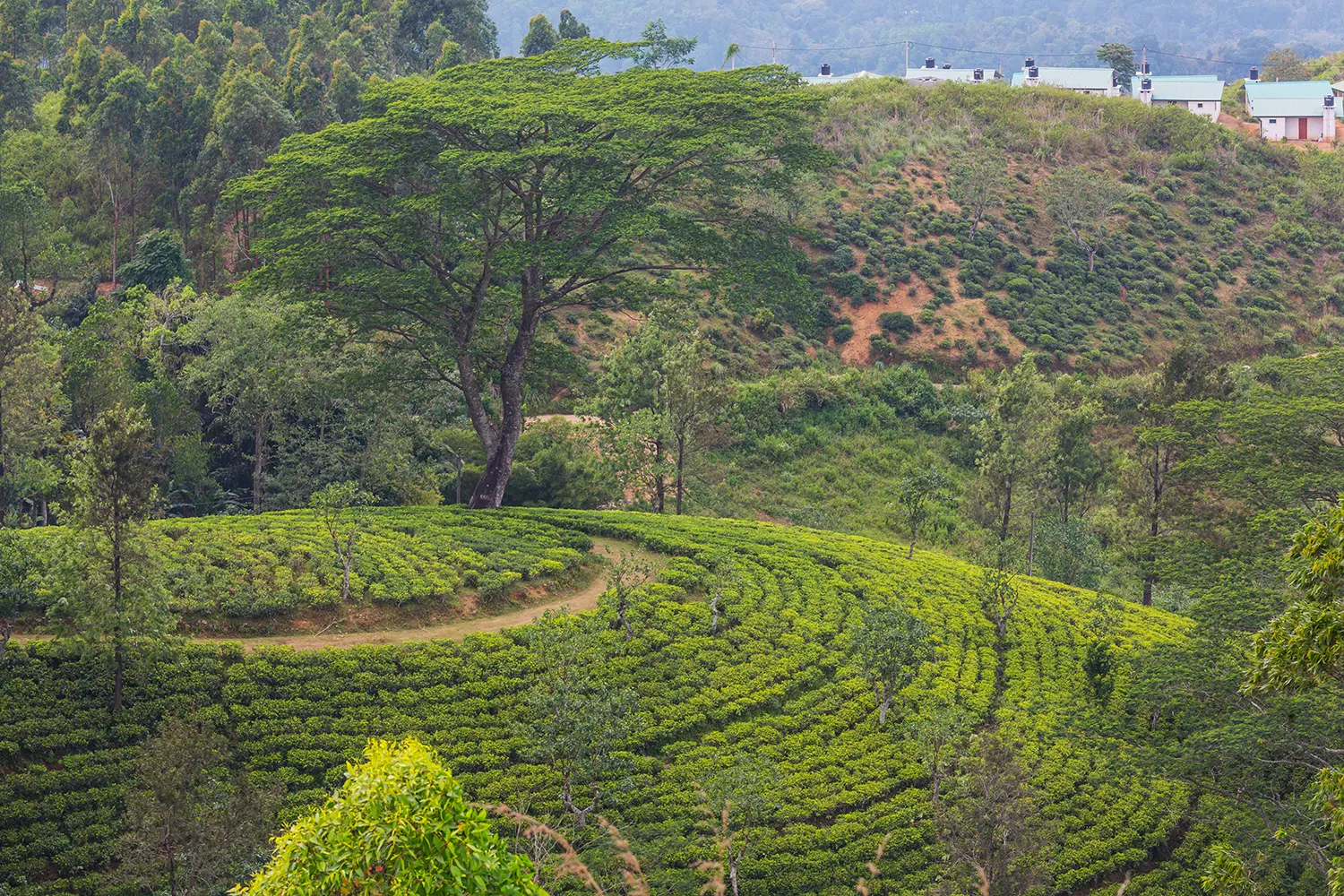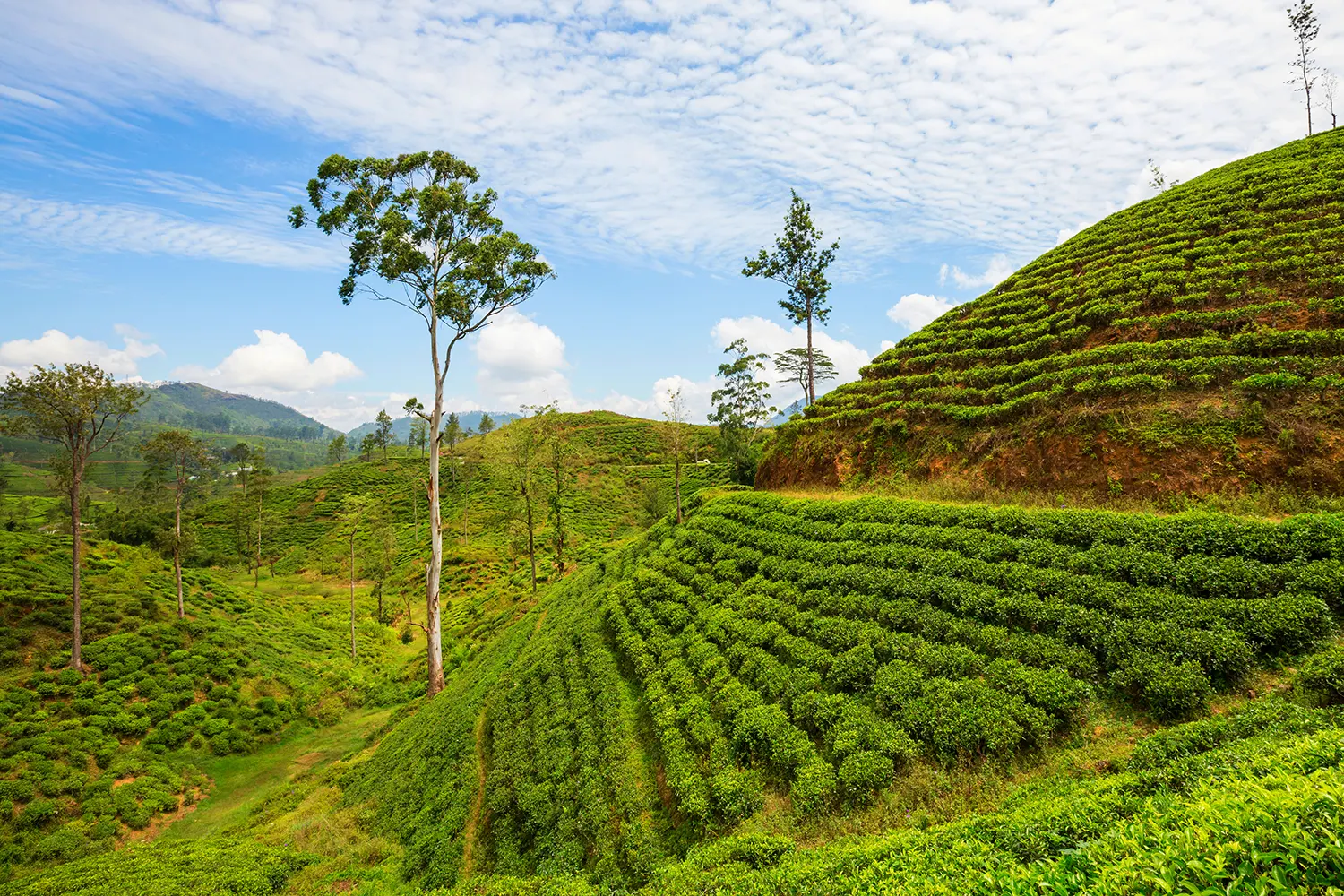Ceylon Tea Regions


Tea Regions in Sri Lanka
Sri Lanka, famously known for its high-quality Ceylon Tea, boasts a diverse range of tea-growing regions, each offering distinct flavors, aromas, and characteristics based on the unique terroirs of the island. From the lush highlands to the warm lowlands, Ceylon Tea provides a spectrum of taste experiences that tea lovers across the world cherish. Here’s a closer look at the major tea-growing regions in Sri Lanka:
Nuwara Eliya
Known as the "Champagne of Ceylon Teas," Nuwara Eliya is located at the highest elevation, ranging from 6,000 to 8,000 feet (1,800 to 2,400 meters) above sea level. The region’s cool, misty climate and mountainous terrain create light, delicate teas with a bright, golden infusion. These teas are often floral and fragrant, with subtle notes of pine, making them ideal for those who prefer a refined and refreshing brew. Nuwara Eliya tea is often enjoyed without milk to fully appreciate its delicate nuances.




Kandy
Located in the central part of Sri Lanka, Kandy is one of the oldest tea-growing regions in the country. Tea here is cultivated at mid-elevations between 2,000 to 4,000 feet (600 to 1,200 meters). Kandy teas are full-bodied and strong, with a rich flavor and bright color. The region’s teas are perfect for those who enjoy a robust brew that pairs well with milk. Kandy’s central location and historical significance make it a cornerstone of Ceylon Tea production.
Dimbula
Situated between 3,500 and 5,500 feet (1,100 to 1,700 meters), the Dimbula region is located in the western part of the island. This region experiences two distinct monsoons, which create seasonal changes in tea flavor. Dimbula teas are smooth, light, and aromatic, with a bright, golden-orange color in the cup. These teas often carry floral or citrus undertones, making them a favorite for afternoon tea. The best Dimbula teas are harvested between January and March when the climate is cool and dry.




Uva
Uva is a renowned tea-growing region in the southeastern part of Sri Lanka, situated at elevations of 3,000 to 5,000 feet (900 to 1,500 meters). The region is famous for producing teas with a distinct flavor profile that is uniquely sweet and aromatic, often with hints of wintergreen or menthol. Uva’s teas are best enjoyed on their own to appreciate their delicate complexity. The monsoon winds that sweep through Uva contribute to the development of this region’s iconic flavor, especially during the dry season from August to September.
Ruhuna
In the southern lowlands of Sri Lanka, Ruhuna is a region known for its bold, dark teas. These teas are grown at lower elevations, often near sea level, where the warmer temperatures produce leaves that yield a rich, full-bodied cup. Ruhuna teas are typically strong and malty, with a deep reddish-brown color. These teas are ideal for those who prefer a robust, invigorating brew that pairs well with milk and sugar. The region’s unique low-grown teas are cherished for their strength and flavor depth.




Sabaragamuwa
Located between the central highlands and the southern plains, the Sabaragamuwa region is known for its mid- and low-grown teas. Teas from this region are dark, bold, and full-flavored, with a sweet caramel or chocolate-like finish. Sabaragamuwa teas are versatile and well-suited for blends, but they also make a rich, satisfying standalone brew. The region’s ideal growing conditions and careful cultivation methods result in consistently high-quality tea.
Udagama (Haycock Valley)
Udagama, located near the Kanneliya rain forest, is home to the Haycock Valley Tea Factory, one of the significant estates of Ruhunu Development Contractors & Engineers (RDCE). This area benefits from the rich biodiversity of the rain forest and produces teas that are known for their depth and richness. The unique microclimate, combined with the care taken in tea production, results in bold teas with a distinctive flavor, making Haycock Valley teas stand out in the market.




Low Country (Ruhunu and Sabaragamuwa Combined)
The Low Country teas, covering both Ruhuna and parts of Sabaragamuwa, are grown at elevations below 2,000 feet (600 meters). These teas are characterized by their full body, strength, and deep, dark liquor. Low-grown teas are often malty, rich, and strong, making them a popular choice for tea drinkers who enjoy their brew with milk and sugar. These teas are commonly used in blends, but their bold flavor also makes them enjoyable as a stand-alone cup.
